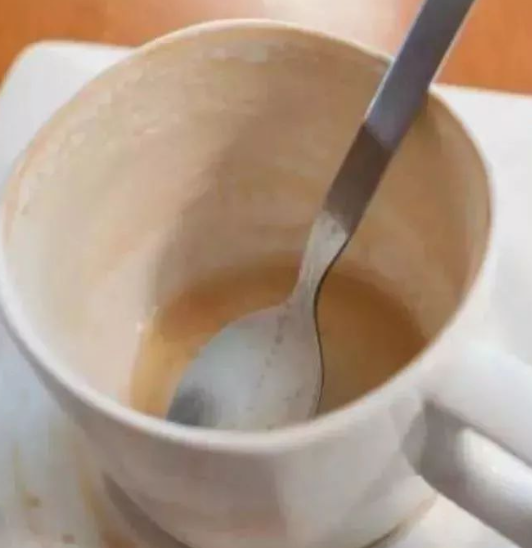
You pour yourself a tall, cool glass of water from the tap. It looks clear and refreshing. But later, as you’re loading the dishwasher, you notice it: a cloudy, white film or a ring of scaly residue left behind in the glass. You might see it crusting around the faucet head or spotting your freshly washed shower door. It’s easy to dismiss it as a nuisance, something a little vinegar can scrub away.
But what if that stubborn residue is more than just a cleaning challenge? What if it’s a message? Stains on cups? Your water is polluted… not with toxins from a factory, but with an overwhelming concentration of the very minerals that make water “hard.”
Before you picture industrial waste, let’s be clear: this type of “pollution” is almost always natural. But that doesn’t mean it’s harmless. Those stains are a visible sign that your water is saturated with dissolved minerals, primarily calcium and magnesium. And while not toxic to drink, this hard water can have a surprisingly significant impact on your home, your appliances, and even your body.
The Geology in Your Glass: Where the “Pollution” Comes From
Think of the water flowing into your home as a journey. Rainwater, which is naturally soft, falls to the earth and seeps through soil and rock. As it travels, it dissolves minute amounts of minerals from the ground, especially limestone and chalk (which are rich in calcium carbonate).
If you live in an area with a lot of these mineral deposits, your water has a long, thirsty drink on its way to your well or municipal supply. By the time it comes out of your tap, it’s carrying a high load of these dissolved minerals. When the water is heated or evaporates in your glass or shower, the minerals are left behind, forming the scale and film you see. The stain isn’t dirt; it’s essentially liquid rock.
The Domino Effect: More Than Just a Stain
That cloudy film on your glass is the most visible symptom, but it’s a clue to a much larger story unfolding inside your pipes and appliances.
- The Appliance Killer: The real damage happens where you can’t see it. Inside your water heater, dishwasher, and coffee maker, scale builds up like arterial plaque. This layer of mineral insulation forces your water heater to work much harder to heat your water, dramatically increasing your energy bills and shortening the appliance’s lifespan. A heavily scaled water heater can be 25-30% less efficient.
- The Soap Saboteur: Hard water wreaks havoc on your cleaning routine. The minerals react with soap to form a sticky scum (soap curd) instead of a rich lather. This is why you might feel a film on your skin after showering, why your hair can feel limp and dull, and why you need to use more detergent for your laundry and dishes, only to be left with spots and a stiff, faded feel to your clothes.
- The Skin and Hair Aggravator: For many, especially as our skin becomes more sensitive with age, hard water can be a genuine irritant. The soap scum can clog pores and strip away natural oils, leading to dryness, itchiness, and exacerbating conditions like eczema.
Is It Safe to Drink?
This is the most common question. For most people, drinking hard water is perfectly safe and can even contribute small amounts of calcium and magnesium to your diet. However, the unpleasant taste and texture can be off-putting. Furthermore, in very rare cases where water is extremely hard, it could be a concern for individuals with specific kidney conditions, but this is uncommon.
Your Action Plan: From Stains to Solutions
If you’re tired of the stains and the side effects, you have powerful options.
- Confirm the Culprit: You can buy an inexpensive hard water test strip online or at a hardware store. This will give you a general idea of your water’s hardness level.
- The Ultimate Solution: A Water Softener. This is the gold standard for solving hard water problems. A water softener is a whole-house system that uses a process called “ion exchange” to remove the calcium and magnesium ions from your water, replacing them with sodium or potassium ions. The result is soft water throughout your entire home.
- Point-of-Use Solutions: If a whole-house system isn’t feasible, you can target specific problems.
- Showerhead Filter: A filtered showerhead can dramatically improve the feel of your hair and skin.
- Sink Filter: A filter on your kitchen tap can improve the taste of your drinking water and prevent scale in your kettle.
- Dishwasher Salt: If you have a dishwasher, using a rinse aid and ensuring it’s designed for hard water (many have built-in salt reservoirs) can help eliminate spots.
Those stubborn stains on your cups are more than a cleaning annoyance. They are a hard, chalky warning sign of the mineral content in your water. By understanding what they mean, you can make an informed decision about whether to live with the effects or invest in a solution. Addressing hard water isn’t just about getting a spot-free glass; it’s about protecting your expensive appliances, saving money on energy and soap, and bringing a new level of comfort to your daily routine. It’s one of those small changes that can have a surprisingly large impact on the quality of your home life.